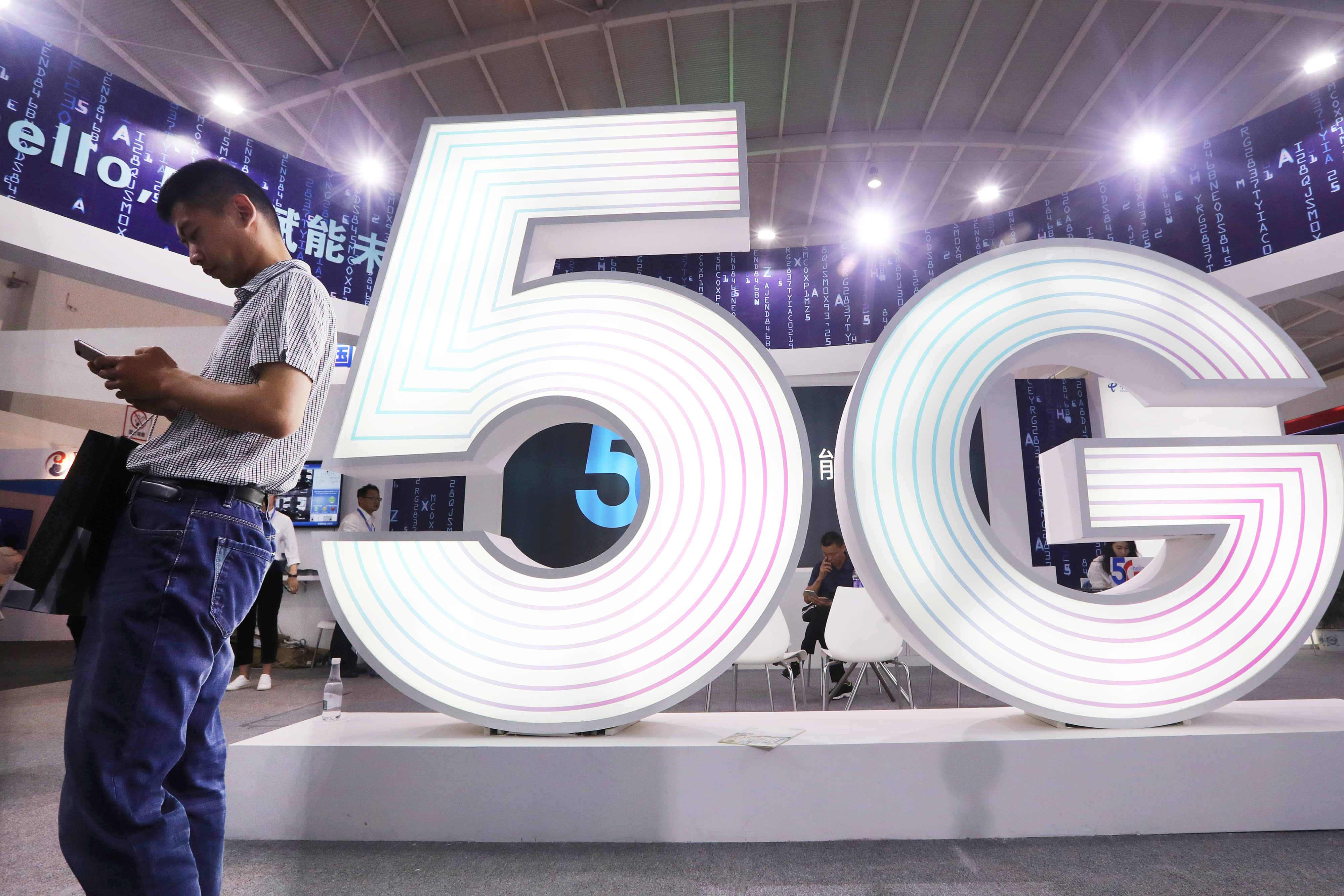
A man stands next to a 5G sign at the Tencent Global Digital Ecosystem Summit in Kunming, China, May 23, 2019.
Stringer | Reuters
You’re going to hear a lot more about 5G this year as new phones and other gadgets that support the new wireless network begin to launch.
5G is really confusing because there are three different versions of it that are being built. The networking architecture will eventually work together but most of what you’ll get right now, and probably for the coming years, isn’t super fast. Even worse, there isn’t anything that works with all three right now.
The four major U.S. wireless companies — AT&T, Verizon, T-Mobile and Sprint — all have their own plans for how to build out 5G to their customer bases. Their strategies relate both to their current wireless spectrum holdings and future plans to build fiber into the ground, which is essential for the fastest type.
Here’s the cocktail conversation summary:
- mmWave high-band 5G: T-Mobile (a little), AT&T and Verizon. About 10x faster than LTE with extremely low latency, which means individual messages are transmitted almost instantaneously. But you need to be standing really close to a tower or transmitter to get those speeds.
- Mid-band 5G: Sprint. About 6x faster than LTE, but with a smaller footprint than low-band.
- Low-band 5G: T-Mobile/AT&T. About 20 percent faster than 4G LTE.
Now let’s unwrap that:
Millimeter wave is the “best” 5G. If you download a 4GB file, like a movie, you might be able to do that in about 5 minutes and 19 seconds on today’s fastest 4G LTE networks (assuming a 100Mbps connection). On a mmWave high-band 5G connection, that same movie would take only 32 seconds (assuming 1000Mbps). But PCMag says that you have to stay within 80 feet of a tower or transmitter to get those speeds.
Some industries are more excited about other aspects of mmWave 5G because of its improved latency. That’s fancy talk for the time it takes for a device to talk to the network. Companies building self-driving cars that may need to stop in a split second will take advantage of those aspects of 5G. Gamers also care about lower latency, so as companies like Microsoft, Google and Sony roll out streaming gaming services, the quality of play will improve.
But most carriers are rolling out millimeter wave 5G in an extremely limited area, and focusing on public spaces like stadiums and arenas. Cities are also rolling out this super-fast 5G in highly dense areas, like downtowns, and some carriers are selling transceivers for home use — similar to how WiFi works today.
Most of what you’re hearing about 5G today actually refers to mid-band or low-band, which won’t be that much of a difference from today’s wireless connectivity.
Where the U.S. carriers stand
Today, T-Mobile has a nationwide low-band 5G network and smaller (but much faster!) mmWave 5G networks in select areas of six U.S. cities. It sells two phones that work on the low-band network but only one that works on mmWave. It doesn’t currently sell any phones that work on both.
Sprint is building a mid-band network that’s available in parts of 9 cities, and it says this network is 6x faster than LTE. Sprint sells four devices that run on its network, including three phones.
Confusing matters, T-Mobile is awaiting court approval to merge with Sprint, which would allow them to combine their low-band and mid-band networks. Since T-Mobile already has a low-band network and a mmWave network, Sprint’s mid-band network is appealing as the third piece of the puzzle for T-Mobile, and is one reason why it wants a merger.
AT&T has a low-band network in 20 markets for “consumers” and faster mmWave “5G+” networks in small areas of 35 markets for businesses. Like T-Mobile, it doesn’t sell phones or devices that support both networks yet. You can pick the Galaxy Note 10+ 5G for the low-band network or, if you’re a business user, the Galaxy S10 5G phone or NETGEAR Nighthawk 5G Mobile hotspot.
(Confusing things further, you’ve probably heard of AT&T 5GE, but that’s just AT&T’s upgrade to its existing 4G LTE network while it builds real 5G.)
Verizon‘s 5G is less confusing, at least for consumers right now, but it’s not as widespread. It’s still working on the fastest mmWave networks, which are live in 27 markets and coming soon to 7 more. But, again, you need to be really close to these towers to use them. And unlike the other carriers right now, Verizon will charge an additional $10/month fee to use 5G. (It says it’s free for a limited time with a 5G phone right now.)
5G is sort of a jumbled mess for consumers right now. But that might change soon. On February 11, Samsung will introduce its new Galaxy phones, which are expected to support all flavors of 5G. Apple is expected to introduce support for all three in its high-end iPhones this September, too. Those launches, and others, will remove a lot of the confusion, since consumers will just get really fast speeds when they’re near mmWave and slightly faster speeds when they aren’t. And those speeds will just increase as the networks grow.

